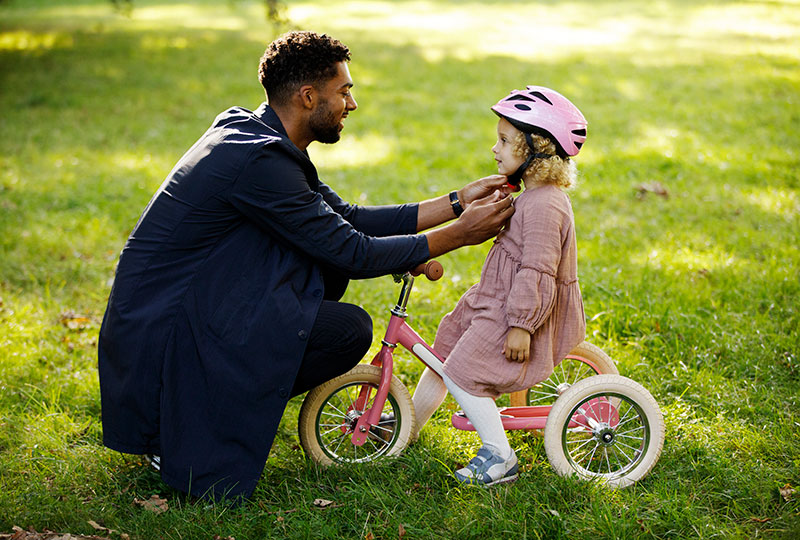Wearing a helmet is an important way to prevent or reduce a head injury. What to know about choosing a helmet for kids.
A helmet is an incredibly important piece of equipment for anyone riding a bicycle— especially kids.
Helmets go a long way toward preventing or minimizing head injuries in the case of a bicycle accident. When teaching your child to ride a bicycle (or, earlier, a tricycle or any outdoor ride-on toy with wheels), place a well-fitted helmet on their head. The message is that wearing a helmet is an automatic part of riding a bicycle, just like wearing a seat belt is an automatic part of riding in a car.
Emergency room doctors and nurses unfortunately treat many adults and children who have suffered concussions, skull fractures or facial injuries they received when falling from or crashing a bike when they weren’t wearing a helmet. A study published in the journal Accident Analysis & Prevention found that more than 2.2 million children ages 5 to 17 were treated in U.S. emergency departments for bicycle-related injuries from 2006 to 2015.
A bit of prevention can provide a great deal of protection in the event of a bike accident. Following the safety recommendations for riding bicycles is essential for helping to keep children (and teens) injury-free. The best place to start is with a bicycle helmet.
Smart details to know about bike helmets for kids:
- Bike helmets have safety standards. All bike helmets made in or imported into the U.S. must meet the federal safety standard issued by the Consumer Product Safety Commission. Look for a label or sticker with the helmet, saying it meets the CPSC standard.
- Bike helmets should fit properly, meaning not too small and not too big. If your helmet is sized properly, you should be able to place one or two fingers between the eyebrows and helmet.
- This trick can help test fit: Put the helmet on the head and look up. You should see the bottom rim of the helmet.
- Helmet straps should make a “V” under the child’s ears when buckled; the straps should be tight but not painful. Have your child open the mouth wide. If the helmet doesn’t hug the head while doing this, tighten the straps.
- If you are unsure about the fit of the helmet, the professionals at a bicycle shop will be glad to help you get a good fit.
- Damage can affect a helmet’s ability to protect the head, so it’s important to take proper care of your helmet.
- If a helmet has been in a crash, it’s time to replace it.
- Attaching reflective stickers to helmets helps drivers can see you better.
- And the most important safety tip: Children should wear bike helmets every time they ride — no exceptions! — even if they’re going for a short ride.

